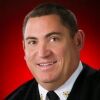By Billy Hayes
In my December 2008 FireRescue1.com column, “Looking Back, Looking Ahead at Firefighter Safety,” I offered my reflections from 2008, as well as my opinion of where I believed we were heading in 2009 in firefighter safety. While many are skeptical to so say we are making a difference, as I said last year, I truly believe we are.
I know that we cannot look at one year of data to call it a success, but I do believe we can use it to predict trends. Within those trends, we can focus our efforts and resources to those areas where we may have seen a decline in incidents to evaluate what may have worked, as well as to identify problem areas. However, we must continue to be realistic in our endeavors that we have a long way to go, but in a comparison to 2008, in specific areas, we have perhaps made a difference. Let’s take a look.
I waited as long as I could to submit this column as I wanted the most accurate statistics as possible. In fact while writing this, we all were notified of the tragic loss of brother firefighters in Georgia, Wisconsin, North Carolina and Utah. These losses bring the total at the time of this submission to 93. Last year during my submission in mid-December, the U. S. Fire Administration was recording a number of 108 with a final tally of 119 for 2008. Again, one could look at the raw numbers and could assume that we are making a difference. But as previously stated, I would ask that we examine two areas that I see as progress, and one factor that continues to plague our profession.
I’ll begin with the number one cause that accounts for 50 percent of firefighter line-of-duty deaths; medical/cardiac related incidents. This year is no surprise again. By my review and evaluation, 55 of the 93 LODDs fall into this classification. By all means we need to focus much of our efforts on making sure that before, during, and after emergency responses, we have healthy individuals responding to calls for help. This year we have seen the age range balance in those younger than 50 as those over the age of 50. We have to remember that some of these occurrences did not seem predictable, but when we really dig down they probably were, which makes them preventable.
On the other hand, the second leading cause of LODDs, which generally constitutes 25 percent, are roadway incidents that include motor vehicle crashes and firefighters struck by vehicles on roadways. Again, based on my evaluation, that number has declined this year to a total of 12. However, in conjunction with this decline on the surface, we must remember the incidents such as the ones in Florida and Raleigh where firefighters are still alive because they were wearing their seatbelts. This is the first area I believe we have seen some success this year.
The second area, which I know gets everyone stirred up is actual combat firefighting. I have defined roughly nine individuals as lost in six specific incidents. Three incidents (West Virginia, Texas and New York) claimed two firefighters each for a total of six. While these firefighters and their families (at home and at work) cannot be forgotten, it must be recognized that this number is lower than previous years. We must reflect on these six events in comparison to the high number of fires that the American fire service is responding to annually and determine if we are improving in our suppression strategies.
There are a number of dedicated individuals and organizations that are working diligently to continue to reduce firefighter LODDs. I want to specifically recognize the State and Regional Advocates of the Everyone Goes Home Program through the National Fallen Firefighters Foundation. As with so many of the firefighter safety programs that are active in our country, there are forgotten heroes behind the scenes who are trying to make a subtle difference in saving lives. Our Advocates are doing a phenomenal job and are not giving up when the non-believers are saying we’re not making a difference. On the larger stage, all of these organizations and individuals are making a combined successful difference.
I’ll close with a final thought for 2009, I want to comment on the “getting back to a culture of extinguishment” that was born earlier this year and of which I have steered clear of. There’s nobody that is saying we’re not allowed or discouraging anyone to fight fire. I know we have a job to do. I know the public expects us to respond quickly and perform flawlessly to make their crisis better. But I haven’t met a public citizen yet that expects us to be unhealthy where we can’t do the job when we get there, not arrive safely to begin with, or die in a situation where we shouldn’t have been.
There’s no reason why we can’t have a joint culture of safety and extinguishment in this profession. We all want to save lives, we may just have different views on how to do it. But if we don’t work together then we will continue to set ourselves up for failure. Most agencies in this nation don’t have the comparative resources that DC Fire and EMS, FDNY, or Los Angeles County has; therefore, as larger agencies, we have the responsibility to encourage everyone to work within their limits and not conduct the operations of six companies with only six people on the fireground. That’s a culture of extinguishment and safety we MUST collectively work on.
Again, thanks for all your hard work in 2009 and I look forward to a continued reduction in firefighter injuries and LODD’s in 2010. Happy New Year!!!












